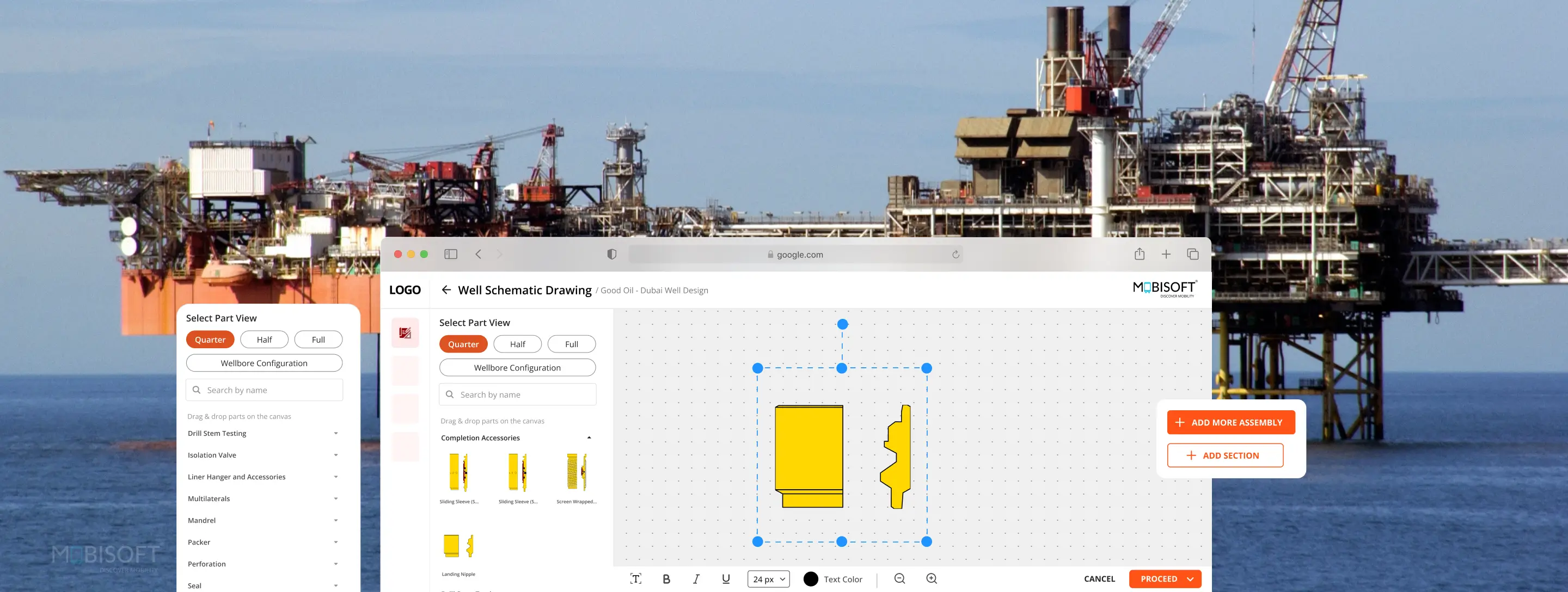Well completion management is a critical phase for oil and gas companies, requiring precise execution, seamless coordination, and accurate data handling. However, reliance on traditional tools such as spreadsheets, paper-based schematics, and manual data entry has resulted in operational inefficiencies, increased error rates, and delays.
To address this challenge, a leading innovative solutions provider in the oil and gas industry sought a Multi Tenant Web Platform that would modernize how completion engineers and field teams plan, manage, and report well operations. The platform brings together interactive schematic design, real-time calculations, and automated reporting capabilities such as Excel and PDF exports in one centralized system.
By eliminating manual workflows and introducing intelligent automation, the application improves operational accuracy, accelerates decision-making, and enhances collaboration across departments.
Well completion is a technically complex process demanding thorough planning and execution. It includes schematics, part inventories, wellbore designs, performance monitoring, and maintaining real-time documentation. Historically, companies relied on physical schematics, spreadsheets, and disconnected databases. This led to inconsistencies and delays. Common challenges included:
Critical data was stored in multiple formats and locations. The data silos made it difficult for teams to retrieve, verify, and update information efficiently.
Manual drafting processes required extensive time and effort. Updating a schematic often meant editing several documents and re-checking calculations, increasing the risk of inconsistency.
Spreadsheets were used for essential computations such as material volumes, well depths, and pressure values. Manual formulas were time-consuming and often error-prone.
Collaboration between engineers, field personnel, and project managers was fragmented without a unified platform. Real-time updates and shared visibility were virtually impossible.
Recognizing the need for a smarter approach, the client initiated the development of a fully integrated web application that combined all core aspects of well completion into a single, collaborative environment.

The project focused on delivering a SaaS software solution that would:
The web-based application development followed a structured, iterative approach rooted in continuous collaboration with energy domain experts.
The centralized web-based application introduced a fully digital ecosystem for managing all aspects of well completion. Key components included:
The platform delivered measurable improvements across operational, technical, and collaborative dimensions:
By digitizing well schematics and automating core tasks, the platform transformed how teams approach well planning. It successfully minimized downtime, reduced rework, and elevated overall productivity.
The application stands out as a practical and scalable solution to long-standing inefficiencies in well completion management.
To further enhance platform usability and extend its value, the following future improvements are recommended:

Allow engineers to define report structure and add annotations or custom summaries.

Develop a mobile-responsive interface for field engineers to access and update well data on the go.

Connect with downhole sensors and IoT devices to stream real-time performance metrics into the system.
This centralized web application redefines how oil and gas companies manage well completions. By consolidating data, automating calculations, and enabling dynamic schematic design, it brings clarity, speed, and accuracy to a traditionally manual process. As the platform continues to evolve, incorporating mobile access and real-time monitoring will push the boundaries of what digital well management can achieve in the energy sector.